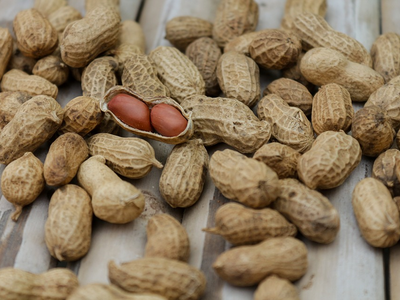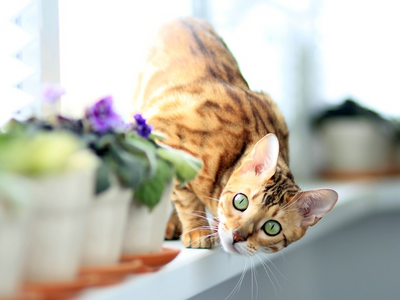30.12.2021
Give your queen the royal treatment with the best pregnant cat food
Pregnancy is a stressful time for all creatures, and cats are no exception.
The best thing you can do for your queen is to make sure she has enough energy to withstand the rigours of carrying and bringing up kittens.
During pregnancy, cats need up to twice the calories they would normally burn. Diet is the critical factor in ensuring the queen can cope with the physical toll and look after a whole litter of healthy kittens.
Whether you opt for wet, dry, raw, home-made, or tailor-made cat food, the nutritional value of what you serve your queen is paramount before and after she gives birth.
Untamed takes a look at pregnant cat food—what the queen should eat, what supplements she may need, and how your help is essential in keeping mummy on the right track.
How does pregnancy affect the queen?
The most obvious physical effect of your cat’s pregnancy will be her weight gain.
She should gain about 50% more body mass on top of the weight of her kittens. Most of it is in preparation for her feeding duties as soon as the kittens are born.
A typical feeding chart for a pregnant cat is:
|
Timeline |
Percentage food intake |
|
Before pregnancy |
100 per cent or regular maintenance diet |
|
Week one |
110 per cent |
|
Week two |
120 per cent |
|
Week three |
130 per cent |
|
Week four |
135 per cent |
|
Week five |
140 per cent |
|
Week six |
150 per cent |
|
Week seven |
160 per cent |
|
Week eight |
170 per cent |
|
Week nine |
140 per cent |
Directly after giving birth, your kitty will lose around 40 per cent of the weight she has gained. The rest will be kept as fat reserves to be drawn on during lactation.
This is probably a throwback to her behaviour in the wild—she would need vast reserves of energy as she may not be able to hunt while feeding her babies.

Pregnancy can be seriously tiring.
Source: Aleksandar Cvetanovic
What is the best diet for a pregnant cat?
Cats are obligate carnivores, so their bodies are best adapted to getting the necessary nutrients from meat.
Your cat eats for:
- Energy
- Maintenance of structural elements like bones, organs, and muscles
- Special circumstances, such as pregnancy
A queen’s pregnancy places a vast amount of strain on her system, so her diet must give her everything she needs to thrive.
Some manufacturers recommend you feed your pregnant queen with kitten food, but you can achieve the same effect with increased amounts of the best-quality meals.
The main food groups you should take particular care of are:
- Proteins
- Fats
Proteins
Proteins are made up of combinations of amino acids your feline needs for:
- Muscle build
- Skin and coat health
- Organ function
Once a protein has been ingested, a cat will break it down into its constituent amino acids and synthesise new proteins as needed.
As meat-eaters, cats find it considerably easier to get amino acids (like taurine) from animal protein. Felines could get the amino acids from grains and cereals or other vegetable sources, but an entirely vegan/vegetarian diet would fail to satisfy their biological needs.
The efficiency at which your kitty can metabolise various protein sources is measured as the protein’s biological value (BV)—the higher the value in per cent, the less your cat has to eat to get what she needs.
The biological values of the most common protein sources are as follows:
|
Protein source |
Biological value (how much of a protein source a cat can use) |
|
98% |
|
|
Tuna, salmon, sardines, or prawn |
94% |
|
Beef and pork or ham |
87% |
|
Soya |
68% |
|
Wheatgerm, corn, sweetcorn, and other vegetable proteins |
Below 65% |
Any protein source with a BV of 90% will deliver all required nutrients in a relatively small portion.

High-quality proteins can make all the difference in pregnancy.
Image (c) Untamed
Fats
Pregnancy is an energy-sapping time for your queen.
To ensure both she and her kittens stay healthy, she needs calories in abundance, and fat is a viable energy source, coupled with animal proteins.
Fats deliver twice as much energy as carbohydrates and provide essential fatty acids to help maintain cell structure.
To understand how much energy your queen needs during pregnancy, you can look at her average calorie requirements compared to a non-pregnant feline:
|
Cat daily energy requirements |
||||
|
Cat weight |
2.5 kg |
4.5 kg |
6.5 kg |
9 kg |
|
Non-pregnant cat |
170 kcal |
280 kcal |
360 kcal |
440 kcal |
|
Pregnant queen |
336 kcal |
603 kcal |
851 kcal |
1,091 kcal |
Animal fats in your queen’s food make it taste great and inviting, which is essential because the best nutrition in the world is useless if your feline doesn’t like it.
Do you need vitamins for pregnant cats?
Vitamins and minerals are essential for all cats, but a pregnant queen needs to be in top condition to help her kittens develop correctly.
Both nutrients play a crucial role, as explained in the following table:
|
Nutrient type |
Explanation |
|
Vitamins |
Vitamins help the necessary chemical reactions take place in the body and can be found in:
Your cat needs vitamins A, B complex, D, and E in her diet. She can synthesise vitamins C and K on her own |
|
Minerals |
Minerals help in the formation of bones and teeth and regulate fluid concentrations in a cat’s body. The most important minerals your queen needs are:
|
If you feed your queen a meat-based diet during pregnancy, she should get all the vitamins and minerals she needs.
You should also check with your vet whether any supplements are recommended because of deficiencies your kitty may be displaying. Chronic conditions like diabetes or some gastrointestinal issues may need a special meal plan and constant monitoring during pregnancy.
Can you continue with the same diet for pregnant cats during lactation?
Lactation is, if anything, even more of a strain on your queen than pregnancy.
Whatever you feed your queen while she is nurturing her kittens, she will lose weight. The cat will have added around 40% of her body weight during the final stages of her pregnancy in preparation for feeding her kittens.
If she was on a diet rich in animal protein and fat during pregnancy, you can safely continue with this regime.
You may notice that she will need food:
- More often
- In larger portions
There is no cause for alarm because she needs the energy to maintain a constant milk flow for the little ones. You can’t replace the queen’s milk with cow’s milk as kittens lack the enzymes to metabolise dairy products. The result could be severe diarrhoea.
As she reaches the weaning phase, you may want to reduce the amount of food you offer her gradually. This will allow her milk production to taper off, but you should also keep the kittens from suckling during this period. Lactation—like breastfeeding in humans—works based on demand stimulating supply. As the demand drops with the kittens being prevented from suckling, the milk supply will dry up.
You can start reducing the amount of food each day during the weaning period. The target is to return to her pre-pregnancy feeding amounts on day four or five of weaning.
How to choose the appropriate pregnant cat diet
To get adequate food for your pregnant or lactating queen, you must learn to decipher cat food labels. The two most important sources of nutritional information are the following:
- Ingredients list
- Guaranteed analysis
Ingredients list
The ingredients list should tell you precisely what is in the food so that you can make an informed choice.
Food labelling regulations stipulate that ingredients should be listed in order of their weight, with the largest ingredient at the top. Any cat food that says “complete and balanced” on the label contains all the nutrients your feline needs and avoids any substances that could be harmful, but there are significant differences in quality among various brands of cat food.
The best products have meat as the first ingredient, but there are a few tricks you should be aware of to get the best:
- Ingredient splitting—If you notice a long list of grains and cereals directly after the meat source, you should check whether they are similar. Corn gluten, corn meal, and ground corn are essentially the same ingredient but are often split to ensure that meat stays at the top of the list
- Vague ingredients—The more defined the ingredients, the better the cat food. If you see terms like “meat and animal derivatives,” you should be careful because this phrasing implies that slaughterhouse scraps have been used as a meat base
- Additives—The best cat foods contain no additives, flavour-enhancers, or E-numbers. Cat jelly and cat gravy are usually fine as they increase the palatability of the food, but meat should be at the top of the list
The best ingredient lists contain:
- Clearly defined, understandable terms
- Few ingredients
- Consistent formulas
Guaranteed analysis
The guaranteed analysis tells you how much of each nutrient group is in the food.
The analysis has to list:
- Protein
- Fat
- Carbohydrates
- Moisture
It is a measure of quantity, not quality, so you should always cross-reference it with the ingredients list to see the actual quality of the food.
If you combine the guaranteed analysis and the ingredients list, the best foods will feature:
- Animal protein of 50 per cent or more
- Fat content of up to 20%
- Less than three per cent carbs
Food with these values is the high-protein, high-calorie nutrition your queen needs to maintain a healthy pregnancy and deliver kittens.
Can Untamed help with nutrition for pregnant cats?
Untamed understands what your kitty needs to be active and healthy in any phase of their life.
We also know how important nutrition is to your queen while she is growing and nurturing her kittens. Our recipes take account of her requirements while being great-tasting and easy to chew even when her little ones are pestering her.
We stick to the following high standards:
- Protein levels
- Protein sources
- Vet-approved formulas
- Human-grade ingredients
- Gentle steaming
Protein levels
Our diets contain up to twice the amount of animal protein you usually find in commercial cat foods.
Your queen will get the nutrition she needs to help her through the strain of pregnancy and lactation.
Protein sources
Each Untamed diet contains high-quality ingredients and animal protein.
The last thing you want is for your queen to be struggling with food allergies during her pregnancy.
We don’t use any irritable ingredients in our recipes, ensuring our diet is hypoallergenic and fit for sensitive pregnant felines.
Vet-formulated formulas
All our food is formulated in collaboration with vets and cat nutrition specialists to ensure your feline gets everything she needs.
We also pay particular attention to the taste, so you don’t need to worry about your queen turning her nose up at food when she needs it most.
Human-grade ingredients
All our ingredients are of human-grade quality, so your kitty only gets the best of the best.
We take pride in ethical production and respect the environment by recycling and reducing our carbon footprint.
Gentle steaming
We don’t aggressively boil or cook our food.
Our gentle steaming process destroys harmful bacteria while sealing the nutrients into each meal.
Try Untamed to understand the difference between junk food and the real deal!
Check out how Untamed gives you the best cat food for pregnant cats!

Your queen deserves the best of everything!
Image (c) Untamed
We know that your queen’s pregnancy is a special time for you both, and we can help you make it safe and happy.
If you are planning a pregnancy, the sooner you switch to Untamed, the better. Even if the joyful event comes as a surprise, it’s never too late to give your queen the best nutritional support she can get.
Here’s what you need to do to get a home delivery of cat food for your mummy-to-be:
- Visit our Try Now page
- Tell us more about your cat
- Select a meal plan and place your order
It will land on your doorstep in no time, and your kitty can start tasting our delicacies.
Once you have discovered what she loves, let us know. We will start sending you monthly subscription boxes of cat food for mummy, and if you need eventually, her kittens.
You will probably need to increase the amount you feed your queen as the pregnancy progresses, so tell us how you are getting on and whether you are running out.
We will keep on sending your monthly packs until you tell us differently, and you can sit back and watch your queen enjoy her pregnancy and new babies!
You should notice the difference in your queen in no time:
- Within a week—She should be more energetic and produce less mess in the litter tray
- After two months—She should progress through her pregnancy with enough energy to remain active
- After four months—Your queen will have ample energy to look after her kittens, and her coat should be sleek and shiny
- For life—Her weight should return to its pre-pregnancy level, and she will be easily able to cope with her babies’ energy levels
Untamed turns a stressful time into moments of sheer bliss!

The best you can do for your queen!
Image (c) Untamed
How does pregnancy in cats progress? It’s essential to understand what your furry friend is going through
Feline pregnancy lasts around 62–69 days but can extend to 72 days if the queen is expecting a large litter.
She can carry between one and ten kittens and can come into season from about four months onwards.
Your queen may only gain significant weight in the last three weeks of her term, but the tell-tale early signs that your kitty may be expecting are:
- Her heat cycles will stop
- She will start seeking out food more frequently
- The expecting cat may suffer from morning sickness
- The mum-to-be may sleep more often
- She will start looking for secluded, safe spots to deliver
- You may receive more love and attention than normal
Shortly before she gives birth, the cat will hide in a secluded spot. You should make sure she goes somewhere warm, private, and well-padded with blankets so she can feel as comfortable as possible.

This is what I’m in for???
Source: Pixabay
Five stages of feline pregnancy
Cats go through five stages of pregnancy:
- Fertility
- First pregnancy signs
- Early pregnancy stage
- Final pregnancy stage
- Labour and birth
Fertility
Female cats come into season every two weeks or so from spring until autumn.
Once she has mated, you probably won’t notice any signs of pregnancy for about ten days—this is the time it takes for fertilisation to occur.
First pregnancy signs
The first signs that your kitty may be pregnant are the behavioural markers mentioned above.
You probably won’t notice any change in your feline’s energy levels, feeding routines, or outward appearance at this point.
The pregnancy can be fairly advanced before you become aware of it.
Early pregnancy stage
In the early stages of her pregnancy, your kitty may lose her appetite but steadily gain weight as the kittens grow. Regardless of how much she puts on, let her, as pregnancy is not the time to diet.
During this phase, she may show signs of morning sickness, including:
- Vomiting
- Lethargy
- Loss of appetite
If the symptoms persist—particularly if your cat doesn’t eat for 24 hours or more—you should take her to the vet as a precaution.
Final pregnancy stage
The kittens will begin to grow rapidly in the final stage, and your feline will start piling on the pounds preparing for lactation.
About a week before the kittens are due, your cat may start:
- Nesting
- Becoming restless and meowing constantly
- Refusing food—this is a sure sign that the kittens are imminent
Labour and birth

Mummy will find a quiet place to give birth.
Source: Francesco Ungaro
As soon as you notice the first signs of discomfort, you should expect the first kitten to be born around an hour later.
Each subsequent kitten will arrive after 15 to 20 minutes until the litter is complete.
Mummy will know instinctively what to do.

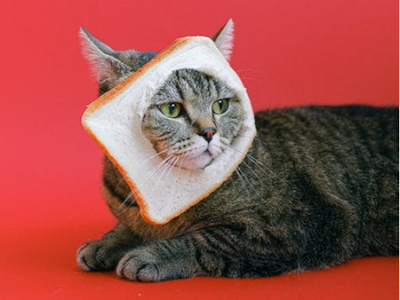
![Associated image for Best food for Ragdoll cats in the UK [Broken Down]](http://untamed.com/cdn/shop/articles/featured_best_food_for_ragdoll_cats_uk_400x300_crop_center.jpg?v=1646818249)
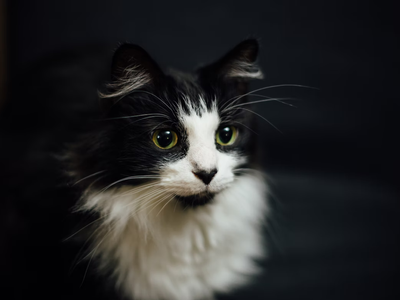
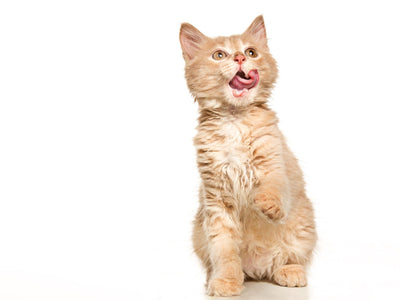
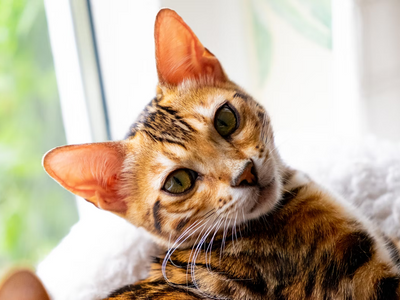
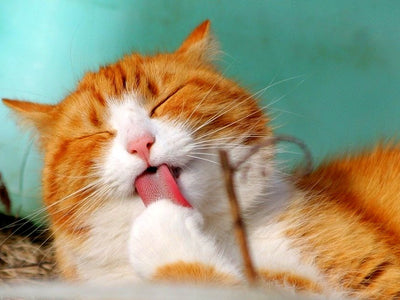
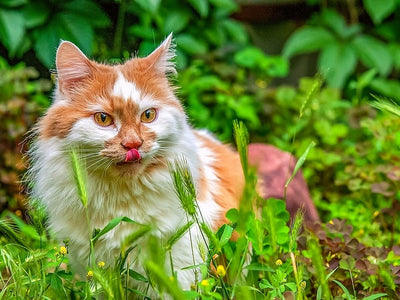
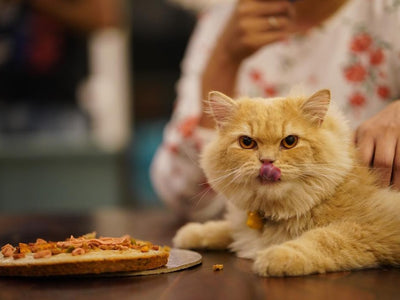
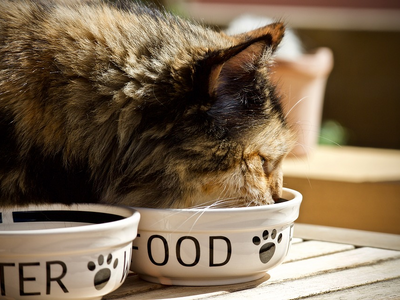
![Associated image for What human food can Sphynx cats eat? [Comprehensive list]](http://untamed.com/cdn/shop/articles/what_human_food_can_sphynx_cats_eat_Featured_400x300_crop_center.jpg?v=1648705074)
